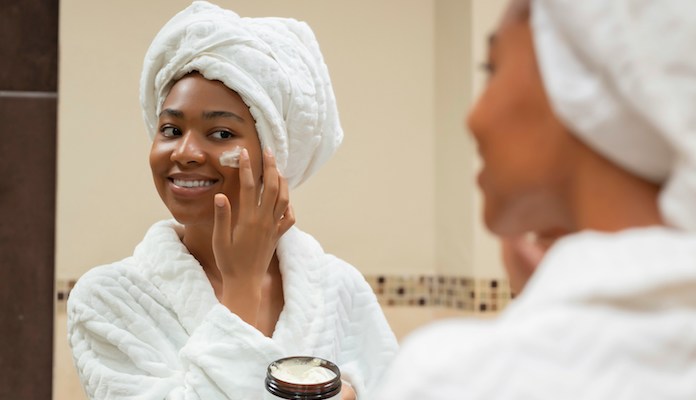
Buying skincare products can provide a beautiful means of self-care and retail therapy. However, given the influx of new and viral releases, it’s easy for the many options to get overwhelming.
New skincare items emerge almost every week and go viral on TikTok, and many of them make grandiose claims too tempting to ignore. While you need a good skincare routine, you don’t need to splurge on offerings that promise miracle results. And Americans spend $754 a year on impulse social media purchases.
You can treat yourself now and then, but if it starts to impact your budget, take a step back and assess how to control your spending. Check out these five tips on how to avoid overspending on hyped products.
1. Know your skin type and concerns.
Skincare isn’t one size fits all, so the items that work for your favorite beauty influencer might irritate you and vice versa. Knowing your skin type and concerns will make keeping your routine more intentional.
For instance, if you have sensitive skin, avoid buying treatments that contain harsh acids. Instead, research products that work best on your skin type. If you have acne-prone skin, consider visiting a dermatologist instead of buying a new product — it’s a common condition that can lead to permanent scarring if left untreated.
2. Follow the 72 Hour Rule.
The following method helps to stop urges to spend impulsively:
- When you see something you want to buy, write it down or leave it in your cart.
- Take 72 hours to consider if you need the item, explore if you already own something similar, and see if you can get it for cheaper elsewhere.
- After 72 hours, think about how you feel about the product. Do you still need it, or has the desire faded?
3. Try before you buy.
Around 76% of U.S. consumers purchase online, which makes shopping more accessible than ever. However, this opens opportunities for unplanned purchases. You’ve probably tried navigating a website without intending to buy anything before. Suddenly, you get flooded with product suggestions related to your interests.
Recommendation systems of e-commerce platforms like Amazon analyze user interactions to identify what to recommend to shoppers, which may lead to impulse purchases. Their algorithms can recommend items popular among consumers with similar pain points as you, but they might not have ingredients that satisfy your skin’s needs.
Another way to reduce spending is by going to physical shops and asking for samples. While shopping online sounds convenient, buying skin care products in physical stores lowers the risk of disappointment and uncertainty. And if you can, test products first to avoid something that doesn’t work or worsens the problem.
4. Try one product at a time.
This method allows you to determine whether you should add something to your routine–for example, if it’s effective or causes a negative reaction. you consider adding to your routine is effective or causing a reaction. When trying out items with active ingredients, incorporate them low and slow. For instance, start retinol with a lower percentage of 0.1%–0.3% and use it twice a week, slowly increasing frequency until your skin acclimates.
5. Create a budget.
A fixed budget lets you enjoy shopping without going broke. Note your income and expenses, then see how much you have left over. Make sure to take advantage of discounts when you can — they can help you get an expensive but worthwhile skincare purchase for much less.
Remember these strategies when you want to spend a lot on new product releases. By prioritizing skin care quality over hype, you can enjoy a rewarding shopping experience and routine.


















